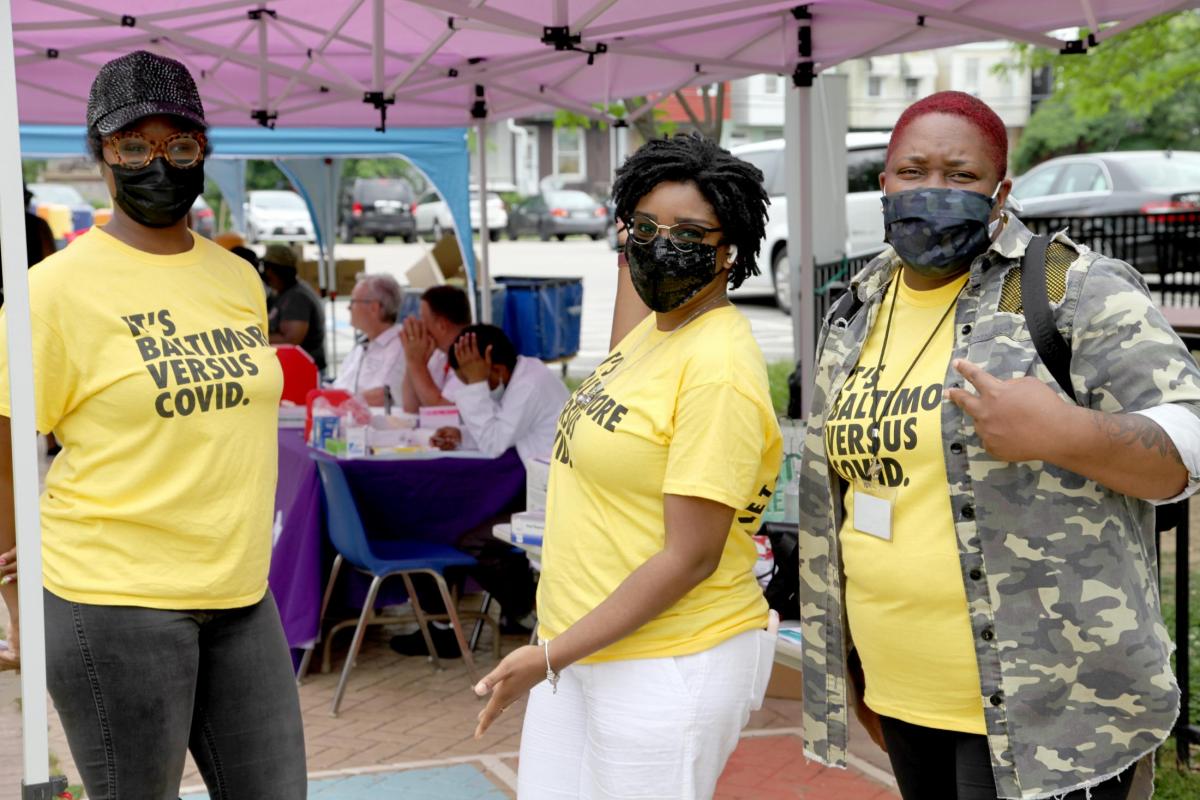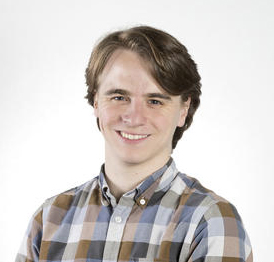
Cathy Costa, who works in the Baltimore City Health Department as a director of strategic initiatives for maternal and child health, knows that one-on-one conversations about the COVID-19 vaccines can lead people to decide getting the shot is right for them.
She knows because she’s seen it happen multiple times as part of the city’s work with institutions of higher learning. The program—which was established in February and partners with schools including MICA, Johns Hopkins University, and Morgan State University—was designed to target populations with limited access to the shot and those with hesitancy about getting the vaccine.
Costa recalls, for example, recently working a clinic targeting pregnant and lactating women. Part of the strategy to attract women to the clinic was to combine vaccines with a free diaper drive. Costa says she saw a woman with a young baby speak with one of the vaccination “ambassadors” hired by the city. After only a few minutes, she got over her hesitation and signed up for the vaccine.
Costa also saw an older woman with her son—who was maybe in his twenties, she says—stop by. “The woman said something like, ‘Well, I’ve been thinking about it, I’m going to get it,’” Costa says. “And he decided to follow his mother in.”
“I was only [at the clinic] for maybe an hour, but it was really good to see that happen,” she adds. “So I know these conversations are making a difference.”
A growing number of these on-the-ground discussions are now happening as a direct result of the partnership between the city and its colleges.
For MICA’s part, the school’s Center for Social Design—which uses “human-centered and collaborative processes to understand and define social problems and make tools that support positive change,” according to its website—has co-hosted listening sessions with Morgan State and Hopkins to hear from 10 populations targeted by the city. Among them are residents who are 65 or older, people experiencing homelessness, residents with disabilities, Latinx residents, immigrant and refugee residents, pregnant and lactating women, young men aged 18-24, Orthodox Jewish residents, children, and faith communities.
Those conversations lead to specific strategies—such as designing creative merchandise for the demographic of young men, or using large-print information sheets for the older populations—that community ambassadors could point to when talking to their peers about the vaccine.
The listening sessions are about “moving ideas into action,” says Becky Slogeris, associate director of MICA’s Center for Social Design. As part of the co-design process, staff from MICA worked with the members to figure out how best to solve issues of vaccine hesitancy or access. In a full-circle process, members of those focus groups became the first community ambassadors.
“To reach population immunity in Baltimore, we have to get creative,” Slogeris says. “This is where social design shines—working interdisciplinarily with partners in public health, digging deep to better understand barriers, and ultimately co-designing solutions that empower Baltimore residents to make their own decisions around vaccination.”
Staff from the center have also been creating brochures, postcards, and other materials that the ambassadors can use in their conversations: “We’re designing tools that then support them in the field,” she says.
Morgan State University, meanwhile, has been leveraging its connections and reputation in Baltimore to train and oversee the peer ambassadors. So far, the ambassadors have logged more than 5,000 conversations with members of the targeted population groups, Costa says. While that number is encouraging for the program, Costa says that, because residents can get the vaccine anywhere—not necessarily at a city clinic—it’s difficult to track just how many of those talks converted to an actual vaccination.
Currently, the vaccination rate in Baltimore has flattened, especially since early June, according to the city’s COVID-19 dashboard. Both the city and the state of Maryland have seen a slight increase in coronavirus positivity rates since a low in June, according to the state’s COVID page. And on July 21, the state reported 200 new COVID cases for the first time since the end of May.
Those factors combined make the work of vaccinating the city’s residents increasingly urgent. Dr. Kendra McDow, the health department’s chief medical officer, says every dose is “life saving.”
In a February press release, the city said it had a goal of reaching 70-80 percent vaccination, and as of late July, Baltimore City has a 61.6 percent vaccination rate.
“We are now at a point where the individuals who wanted to get vaccinated…they got it,” McDow says. “That’s why the peer ambassador program is so important.”
The program, she says, can not only help answer questions for individuals who are hesitant about the vaccine, but also come up with solutions for individuals who are mobility limited or need to navigate public transportation.
“As a city, I think we’re doing well. We are meeting our benchmarks,” she says. “But, of course, we want to push forward. There is an urgency because of the Delta variant. We’re not letting up.”
